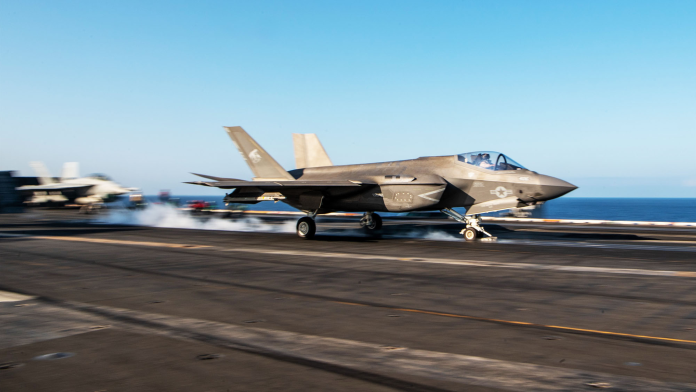US fighter jets, including advanced F-35 stealth aircraft, faced imminent danger during the opening weeks of Operation Rough Rider, a high-intensity US military campaign against Houthi rebels in Yemen, senior officials disclosed to The New York Times.
The operation, launched under US President Donald Trump’s directive, aimed to dismantle Houthi air defences and leadership but encountered unexpected resistance, raising concerns over escalating costs and strategic risks.
Within the first 30 days of the campaign, Houthi forces reportedly came alarmingly close to striking US F-16 Fighting Falcons and an F-35 Lightning II. Alongside these near-misses, the Pentagon confirmed the loss of seven MQ-9 Reaper drones, valued at $30 million each, and two F/A−18 Super Hornets during combat operations.
The cumulative cost of the month−long offensive exceeded $1 billion, straining resources earmarked for potential Indo-Pacific contingencies.
Despite strikes on over 1,000 targets and the elimination of key Houthi figures, US officials admitted the campaign’s limited impact. Houthi forces had relocated critical weaponry, including precision missiles, to underground bunkers, while continuing attacks on shipping lanes and Israeli territory.
The group’s resilience prompted General Michael Kurilla, head of US Central Command (CENTCOM), to advocate for an extended eight-to-ten-month campaign modelled on Israeli counterterrorism tactics. However, President Trump’s impatience with protracted Middle East engagements led to an abrupt ceasefire declaration after just two months.
Political fallout and diplomatic maneuvering
The operation’s abrupt halt followed mounting criticism of Defence Secretary Pete Hegseth, who faced bipartisan ire for using the encrypted Signal app to discuss operational details. While no operational harm was reported, the incident compounded tensions within Washington as casualties and equipment losses mounted.
Trump’s truce, announced on 7 May, caught allies off-guard, particularly Israel, which had sustained repeated Houthi missile attacks. Oman-mediated negotiations yielded a fragile agreement: Houthis pledged to cease targeting US assets but reserved the right to attack ships linked to Israel. The deal, framed by Trump as a “good deal for America,” drew scepticism from regional partners and exposed rifts within the US security apparatus.
Senior Houthi leader Mohammed Ali al-Houthi hailed the ceasefire as a victory, declaring it a blow to Israeli Prime Minister Benjamin Netanyahu. Meanwhile, Israel continued unilateral strikes in Yemen, responding to a 4 May ballistic missile attack on Ben Gurion Airport that disrupted international flights.
Pentagon planners now grapple with depleted munitions stocks and the strategic implications of diverted resources. As General Dan Caine, Chairman of the Joint Chiefs of Staff, warned, prolonged engagement in Yemen risks undermining US preparedness in the Asia-Pacific.
